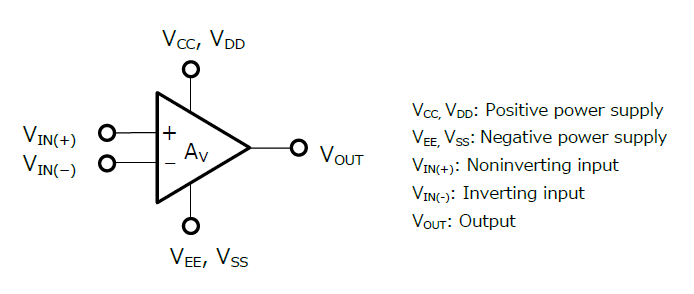- General Top
- SEMICONDUCTOR
- STORAGE
- COMPANY
-
My ToshibaSemicon
- Semiconductor Top
-
ApplicationsAutomotive
Body Electronics
xEV
In-Vehicle Infotainment
Advanced Driver-Assistance Systems (ADAS)
Chassis
IndustrialInfrastructure
BEMS/HEMS
Factory Automation
Commercial Equipment
Consumer/PersonalIoT Equipment
Healthcare
Wearable Device
Mobile
Computer Peripherals
-
ProductsAutomotive Devices
Discrete Semiconductor
Diodes
Transistors
Logic ICs
Analog Devices
Digital Devices
Wireless Devices
※
: Products list (parametric search)
Power SemiconductorsSiC Power Devices
※
: Products list (parametric search)
Isolators/Solid State RelaysPhotocouplers
Digital Isolators
Solid State Relays
Fiber Optic Transmitting Modules
※
: Products list (parametric search)
MOSFETsIGBTs/IEGTsBipolar Transistors※
: Products list (parametric search)
Diodes※
: Products list (parametric search)
MicrocontrollersMotor Driver ICsIntelligent Power ICs※
: Products list (parametric search)
Power Management ICsLinear ICs※
: Products list (parametric search)
General Purpose Logic ICsLinear Image SensorsOther Product ICsOther Product ICs
※
: Products list (parametric search)
-
Design & Development
-
Knowledge
- Where To Buy
- Part Number & Keyword Search
- Cross Reference Search
- Parametric Search
- Stock Check & Purchase
This webpage doesn't work with Internet Explorer. Please use the latest version of Google Chrome, Microsoft Edge, Mozilla Firefox or Safari.
require 3 characters or more. Search for multiple part numbers fromhere.
The information presented in this cross reference is based on TOSHIBA's selection criteria and should be treated as a suggestion only. Please carefully review the latest versions of all relevant information on the TOSHIBA products, including without limitation data sheets and validate all operating parameters of the TOSHIBA products to ensure that the suggested TOSHIBA products are truly compatible with your design and application.Please note that this cross reference is based on TOSHIBA's estimate of compatibility with other manufacturers' products, based on other manufacturers' published data, at the time the data was collected.TOSHIBA is not responsible for any incorrect or incomplete information. Information is subject to change at any time without notice.
require 3 characters or more.
What is an op-amp?
An operational amplifier (op-amp) is an integrated circuit (IC) that amplifies the difference in voltage between two inputs.

It is so named because it was developed for perform arithmetic operations. Amplifiers, buffers, comparators, filters, etc. can be implemented with simple external circuits.
An op-amp has five terminals: positive power supply, negative power supply (GND), noninverting input, inverting input, and output. Generally, these terminals are named as shown below. (Positive and GND terminals may be omitted from the symbol of single-supply op-amps.)
An op-amp amplifies the difference in voltage between the noninverting (IN(+)) and inverting (IN(-)) inputs. Its output voltage is given by Equation 1, which indicates that the output is in the same phase as VIN(+) and in opposite phase to VIN(-).
VOUT = A * ( VIN(+) – VIN(-) ) (1)

In the basic form of usage, an op-amp acts as a voltage amplifier or a comparator. It can also be configured as a filter, phase shifter, buffer (voltage follower), etc. Nowadays, op-amps are commonly used to amplify weak analog signals from sensors in a wide range of IoT devices and home appliances.
Op-amps are generally used with negative feedback to reduce product variations in gain and expand the bandwidth. Typical applications of op-amps include noninverting amplifiers, inverting amplifiers, and voltage followers, which are configured as shown below:
*: Closed-loop gain
There are several ways to categorize op-amps. For example, they are categorized based on: 1) manufacturing process (bipolar and CMOS), 2) power supply type (single-supply and dual-supply), 3) input circuit (differential P-channel MOSFET pair, differential N-channel MOSFET pair, rail-to-rail input, etc.), and 4) electrical characteristics (low input offset, low current consumption, low noise, etc.). Op-amps may also be categorized based on their applications. For details, see the FAQ entry “What types of op-amps are available?”
Related Links
The following documents also contain related information:
- Parametric Search : Operational Amplifier ICs and Comparator ICs
- FAQs : What types of op-amps are available?
- FAQs : What types of amplifier circuits can be configured using an op-amp?
- Application Notes : Basics of Operational Amplifiers and Comparators (PDF:1.08MB)
- Mini catalog : Introduction to Op amps Comparators (PDF:600KB)



